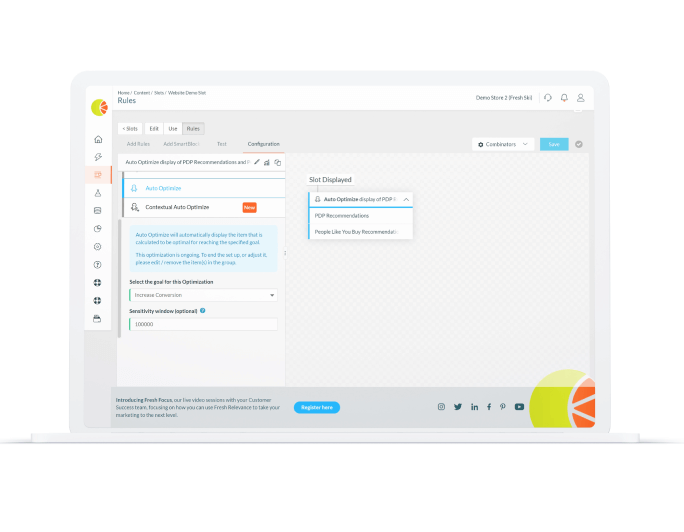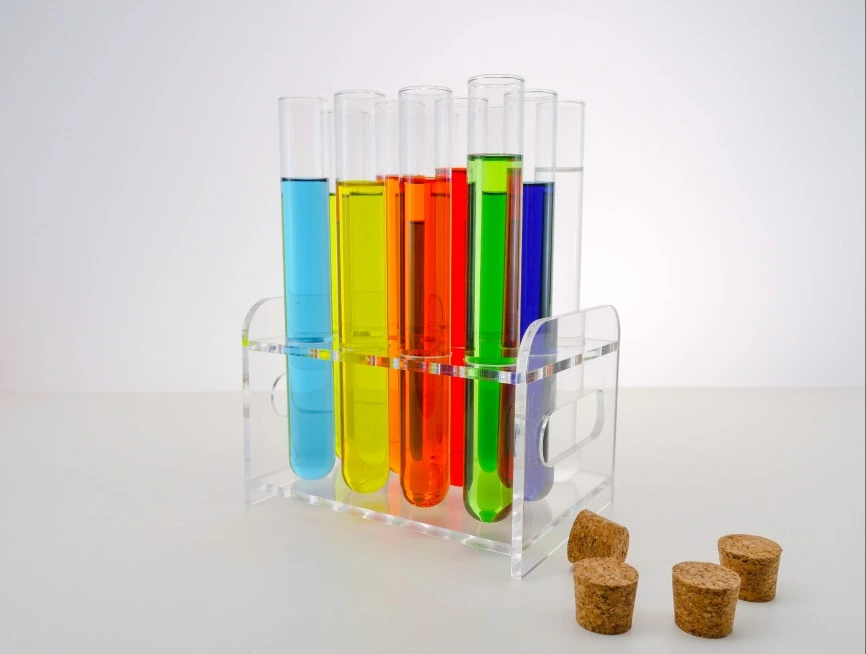There are two schools of thought: 1) For a marketer to be truly effective, they must be creative geniuses and 2) Only the strictest adherents to data-driven marketing can be competitive in today’s eCommerce landscape. Neither opinion is wrong. But getting creativity right 24/7/365 for 100% of your audience is a lot of work. A/B testing powered by machine learning (ML) pairs your creativity with data but takes away the second-guessing and guesswork. And it’s automated.
A/B testing removes the gut feel. And the automation and optimization capabilities help you become competitive — faster.
ML powered A/B testing is essential for enhancing your user experience and engagement, increasing conversion rates, and growing revenue. It can:
- Reveal the risks and cracks in your marketing plan before the full-scale rollout.
- Identify the most effective personalization tactics for each of your segments.
- Ensure your marketing budgets are directed toward the right strategies.
- Validate product/market fit.
A/B testing provides empirical evidence to support ongoing refinement and continuous improvement of your marketing strategies. What are you waiting for? Let’s get started!
How is machine learning used in A/B testing?
A/B testing is literally comparing one sample against another to find the best performer. For example, when all other factors are the same, will customers buy using the red button (A) more often than they will using the yellow button (B)? That simple test could probably be run and analyzed – even on thousands of participants – using an Excel spreadsheet. But the analysis gets more complicated as more variables are introduced and multiple versions of the tests are run.
ML automates the data analysis. It can sift through massive datasets generated from test variations, identify trends and patterns that may not be immediately obvious, and predict outcomes with a high degree of accuracy. By applying advanced algorithms, ML can optimize the selection of content, layout, and design elements to improve user engagement. This integration allows for more personalized user experiences and helps marketers make informed decisions about the variation that performs best, leading to more effective and efficient testing cycles.
A/B testing formats
A/B testing, commonly known as split testing, is a method of comparing two versions of a marketing asset such as a webpage, email, image or selection of ad copy to determine which performs better. Essential to digital marketing strategies, A/B testing presents the ‘A’ version to one group of users and ‘B’ to another and measures the effectiveness based on the number of conversions, opens, bounces, or other relevant metrics.
A/B testing can be categorized into several types based on what is being tested and the method used.
- Classic A/B testing compares two versions where a single variable is different to see which version performs better. This is the most straightforward type of test.
- A/B/n testing is similar to the classic A/B test, but this type compares more than two variables at the same time.
- Multivariate testing (MVT) tests multiple variables and their interactions simultaneously. It’s more complex and requires more traffic to achieve statistical significance.
- Split URL testing hosts the tested versions on different URLs. This is typically used for major redesigns or changes that are more backend than frontend.
- Before-and-after testing (pre/post testing) compares the metrics before and after a change was made. This is not strictly an A/B test as it lacks simultaneous comparison, but it can provide valuable insights for refinement.
- Multi-armed bandit testing is an advanced testing method that dynamically allocates traffic to variations that are performing well while the test is still running.
Each type of A/B testing has its own best-use scenario, depending on the goals of the test, the complexity of the variables involved, and the amount of traffic available for testing.
Machine learning
Machine learning, a subset of artificial intelligence, uses data and algorithms to imitate the way humans learn, gradually improving its accuracy. ML algorithms can analyze large amounts of data, identify patterns, and make decisions with minimal human intervention.
The connection between A/B testing and ML
The integration of ML in A/B testing provides automation and optimization of the testing processes and enhanced decision-making. ML algorithms can analyze extensive data from A/B tests to predict user behaviors, identify significant variables, and recommend which version is more likely to succeed. This application speeds up the testing process and can make it more data-driven and accurate.
Benefits of testing and optimization
A/B testing and optimization, especially when augmented with ML, offer numerous benefits:
- Improved user experience: By understanding user preferences, companies can tailor their content to make it easier for users to find what they need and complete their transaction, thus enhancing user satisfaction.
- Increased conversion rates: Optimized content resonates more with the audience, potentially leading to higher conversion rates.
- Data-driven decisions: Decisions based on A/B test results and ML predictions are more likely to be effective and less reliant on guesswork.
- Efficiency in testing: ML can automate and expedite testing, analyzing results faster than traditional methods.
Disadvantages of testing and optimization
Despite its advantages, there are some drawbacks:
- Resource intensive: Setting up and running A/B tests manually would require significant resources and expertise, but it takes just a few clicks in the Fresh Relevance Optimize Center to test and optimize individual pieces of content or your entire CX.
- Risk of misinterpretation: Incorrect analysis of A/B test results can lead to misguided decisions. To mitigate this concern, take a scientific approach to testing:
- Hypothesize outcome.
- Define high-level goals.
- Identify potential obstacles to achieving your goals.
- Plan steps to overcome the challenges.
- Measure the results.
- Limited scope: A/B tests only compare two versions, which might not encompass all possible optimizations. Marketers today have plenty of options when it comes to testing and optimizing personalized content. With a good personalization platform, you can mix and match testing tactics to meet your short- and long-term goals. Use:
- A/B tests to optimize marketing based on shoppers’ actions.
- A/B/n tests to find the types of content that resonate with customers.
- Control groups to calculate the removal effect and measure a tactic’s sales uplift.
- Data privacy concerns: To address potential data privacy concerns raised by ML-powered A/B testing, it’s crucial to anonymize user data, obtain explicit consent, adhere to privacy regulations such as GDPR, employ data minimization principles, and ensure transparency about data usage. Regular audits and implementation of robust cybersecurity measures are also essential to protecting user information.
How Fresh Relevance can help
Fresh Relevance lets you automate and optimize your marketing strategies using data-driven insights. By leveraging ML algorithms, Fresh Relevance helps companies personalize the user experience and make informed decisions based on real-time data analysis. Test hypotheses with just a few clicks and intelligently optimize strategies for maximum ROI with Fresh Relevance’s comprehensive testing and optimization functionality.

With Fresh Relevance, you can:
- Intelligently allocate traffic to variations that are performing well with automatic optimization.
- Automatically optimize A/B tests for specific eCommerce KPIs.
- Use A/B tests to try new marketing ideas on a subset of shoppers and refine your personalization.
- Dive into up-to-the-minute insights with real-time analytics and reporting.
- Automatically end tests on a set date or number of impressions and display the variant that generated the most revenue.
- Determine the influence of the tested variable on results with control groups.
Conclusion
A/B testing, enriched with ML capabilities, is a powerful tool in the digital marketer’s arsenal. It empowers more effective, efficient, and data-driven decision-making, helping marketers find ways to enhance the user experience and increase conversion rates. However, it’s important to work with the right software. Book a demo to learn more about taking your testing and optimization further with Fresh Relevance.






